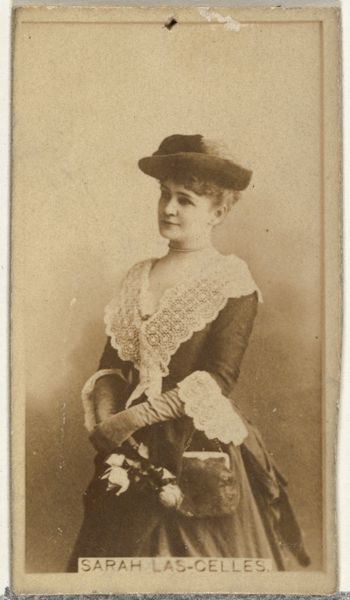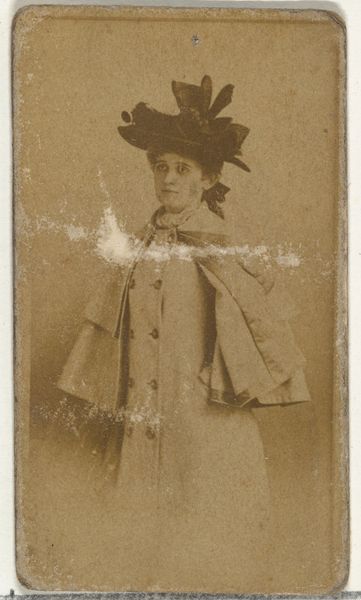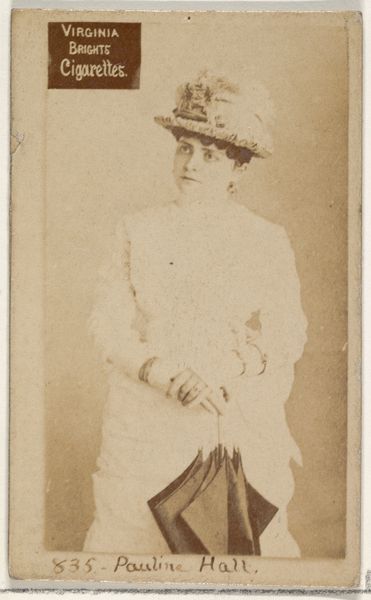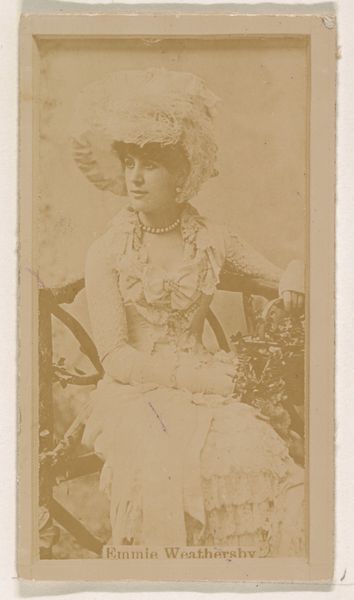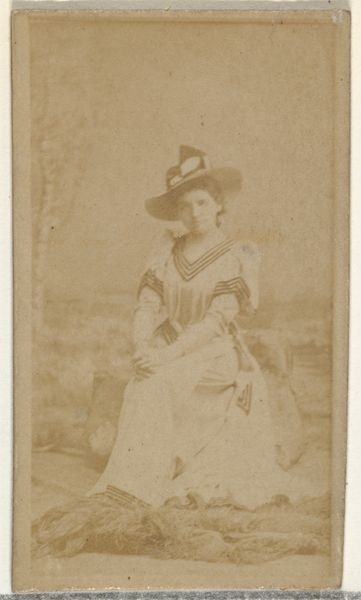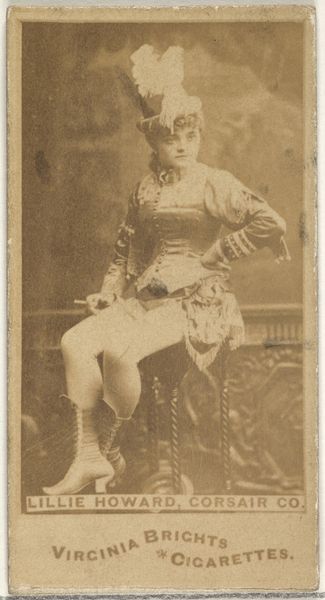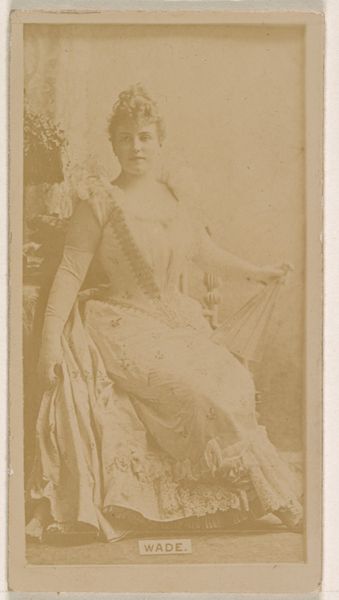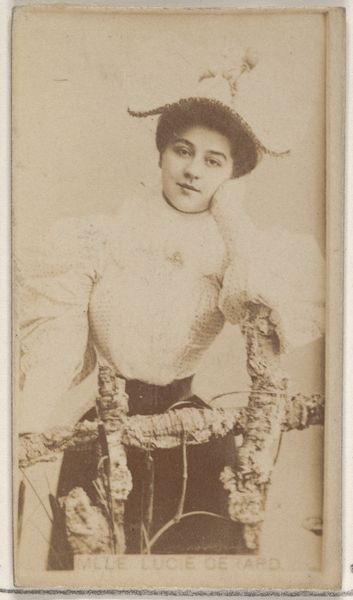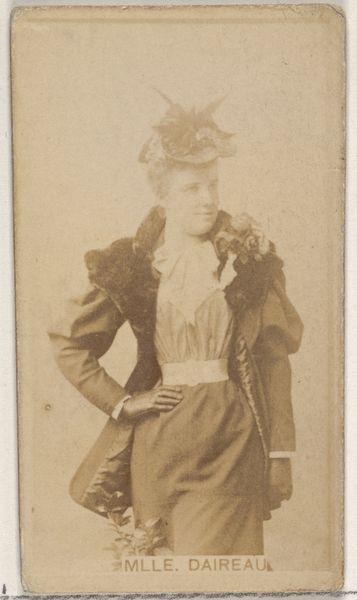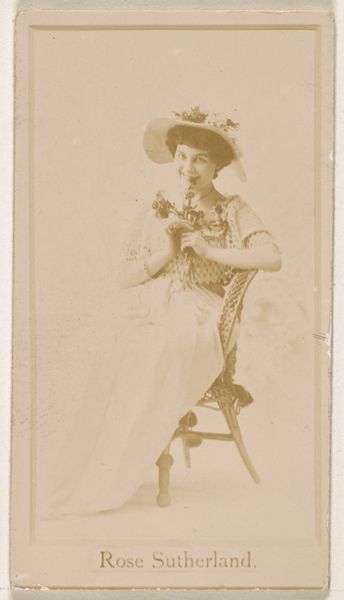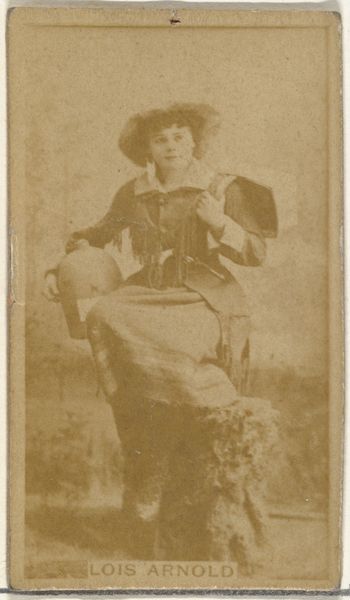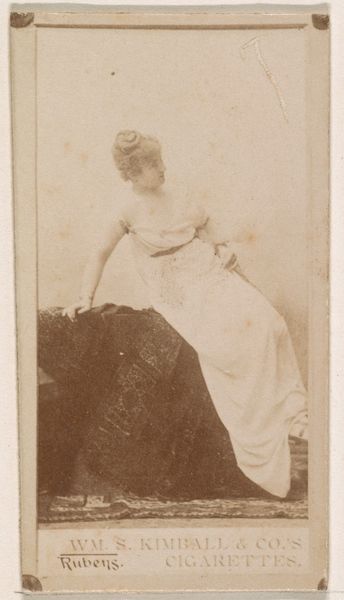
Sarah Las Celles, from the Actors and Actresses series (N45, Type 8) for Virginia Brights Cigarettes 1885 - 1891
0:00
0:00
drawing, print, photography
#
portrait
#
drawing
# print
#
photography
Dimensions: Sheet: 2 5/8 x 1 1/2 in. (6.6 x 3.8 cm)
Copyright: Public Domain
Editor: Here we have Sarah Las Celles, from the Actors and Actresses series by Allen & Ginter, created sometime between 1885 and 1891. It’s a sepia-toned photographic print, very small, like a trading card. I’m struck by how much the lace collar defines the image through texture. What do you see in this piece? Curator: From a formalist perspective, I am drawn to the subtle interplay of geometric forms and the gradation of tones. Observe how the circular shape of the hat is echoed in the soft curve of her shoulder, creating a visual harmony. Also note how the subject is situated asymmetrically, creating space on the right. The figure and ground share similar tones. What is the impact of these similar tones? Editor: I see. So, by muting the tones of the portrait the viewer might be drawn more toward the crispness of the lace detail against that muted backdrop. Curator: Precisely. The interplay of light and shadow is crucial. Notice how the highlights on her face and lace draw our eye, while the deeper tones define the contours. In other words, we may use our understanding of tonal arrangement to appreciate other parts of the work. What elements of the subject contribute to the success of the photograph? Editor: I think it’s also about the portrait’s framing. Las Celles is shown with a soft gaze. In combination with the tilt of her head and the floral arrangement she’s holding, the viewer’s eye travels up to her face. Curator: An astute observation. Her features work together within the photograph as a whole. By looking at the aesthetic components, we gain an appreciation of the artist’s construction, form, line, color, and space in the piece. Editor: This approach to observing a work’s details, even the smallest ones, allows for the viewer to gain new understanding from a familiar or ubiquitous subject. Curator: Indeed. Visual examination allows us to look more closely at aesthetic principles, not simply outward references.
Comments
No comments
Be the first to comment and join the conversation on the ultimate creative platform.
